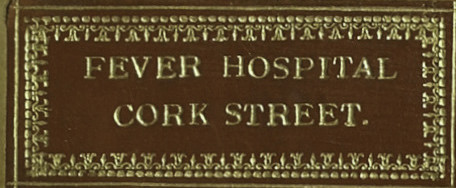In 1809 the hospital’s annual report is given over to a restatement of its standing orders and it also published the duties of the various staff members and its patient admission policy. Of particular note here was the policy concerning visits by members of the clergy, which required prior approval by the Apothecary. Visits by members of the public was restricted to Tuesdays and Saturdays at twelve o’clock and then only for a short period. The hospital was strictly non denominational. That is religion was not a factor in its admission policy and nor did it tolerate any form of proselytising in the hospital itself. This policy went as far as refusing to permit the appointment of a chaplain from any religion to the hospital. This made them unpopular with both sides of the religious divide. In 1817 the board refused a request from a Church of Ireland clergyman to appoint him as chaplain, stating that they knew of no reason to depart from their established rule not to appoint a chaplain. In 1824 a Nurse Wild was dismissed following a complaint by a patient. It was alleged that she had attempted to interfere in the patient’s religious beliefs and to induce the patient to admit the attendance of a clergyman not of his own persuasion. In 1826 a group of Roman Catholic priests from St Catherine’s Parish wrote to the board and to the Lord Lieutenant requesting that the hospital should either fund the appointment of a curate to the hospital or alternatively the hospital board should support a similar request to parliament. The priests made this request because of the extra work placed on the parish by the presence of the hospital and because the impoverished state of the parish prevented them from funding the extra curate. The board convened a special meeting to formulate a ‘proper answer.’ The board decided they had a conscientious objection to the appointment of a chaplain from any denomination.
Whether this non denominational policy extended to hospital appointments was a moot point. Hospital appointments appear to have depended as much on family and educational links as on religious preference. In 1843 a Committee of Inquiry was held into Irish medical charities. Dr Dominic Corrigan gave evidence of his own progress in the Dublin medical world. He was a Catholic, son of a shopkeeper who grew up in the Liberties. He had himself served as a physician to the Cork Street Hospital and resigned when appointed to a position in the House of Industry, which he described as a government hospital. He informed the inquiry that he bought his appointment, in the House of Industry, and sold his resignation. His theory was that his commitment to the poor would enhance his reputation which in turn would attract private patients and of course enhance his financial position. He went on to state that he supported this system because it was the only way Roman Catholics could progress. William Smith O’Brien a member of the inquiry argued that Catholics constituted a large proportion of the medical profession but stood little chance of securing hospital appointments. This, he maintained, consigned them to a life of beggary. Corrigan estimated that there were 107 hospital medical posts in Dublin and only 13 of these were held by Catholics. Four of these thirteen were working in the Fever Hospital. Henry Maunsell, Professor of Hygiene at the Royal College of Surgeons in Dublin contended that the ratio of Catholic doctors to Protestant doctors in Dublin hospitals was in direct proportion to the finance provided by the Protestant governors of these institutions. In 1843 the hospital employed nine physicians.
A columnist with the Lancet who wrote under the pseudonym Erinensis claimed that the system of hospital appointments in Dublin lent itself to nepotistic excess, to fathers retiring in favour of their sons, uncles predestinating their little nephews to office before they cut their teeth, and friends doing a kind turn for each other by adding another little neophyte to the little confraternity of jobbers.(The Lancet, 1826, cited in Martin Fallon, The Sketches of Erinensis, (London, 1979) pp 143-145)
In 1835 the Dublin University Review in a wide ranging article denying various claims of the Roman Catholic community states that in 1833 Protestants contributed £368-8s-7d to the hospital while Roman Catholics only contributed £10-12s-0d. The journal goes on to say that that the ratio of Roman Catholics to Protestants treated there is 10 to one. This is the only reference to the religious persuasion of either patients or donors and implies that records of this nature were being maintained.
In 1837 the Essex Standard newspaper repeated these figures and also quoted figures for the island as a whole. ‘Do these figures not speak volumes in favour of the much maligned cause of the Protestants?’
(see bottom left hand corner of the link)
